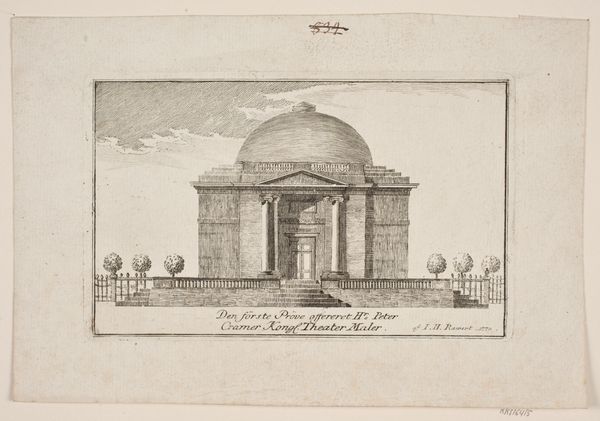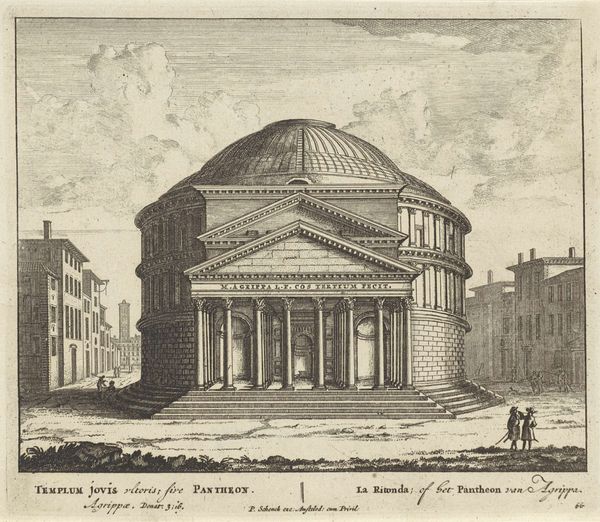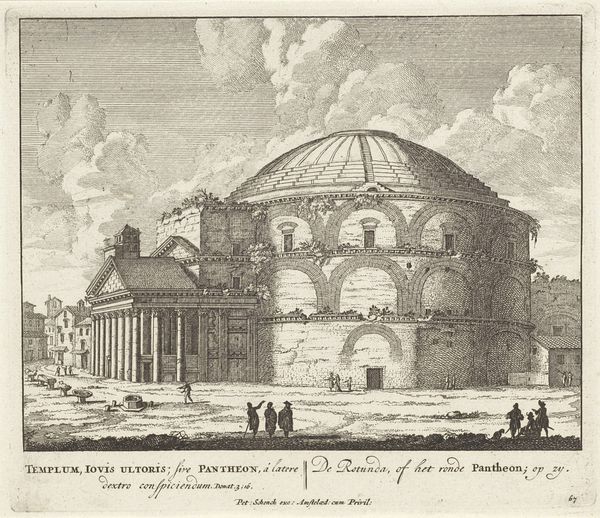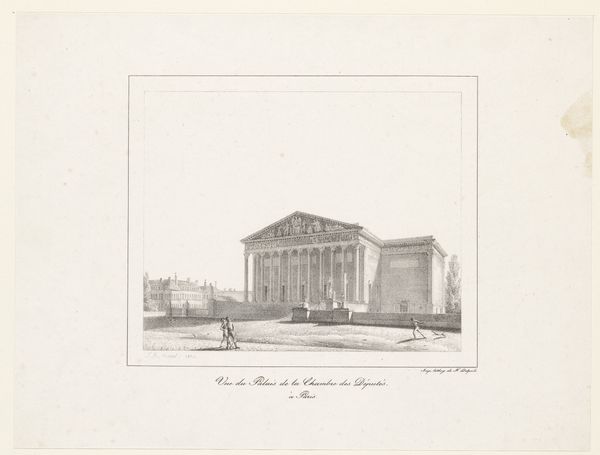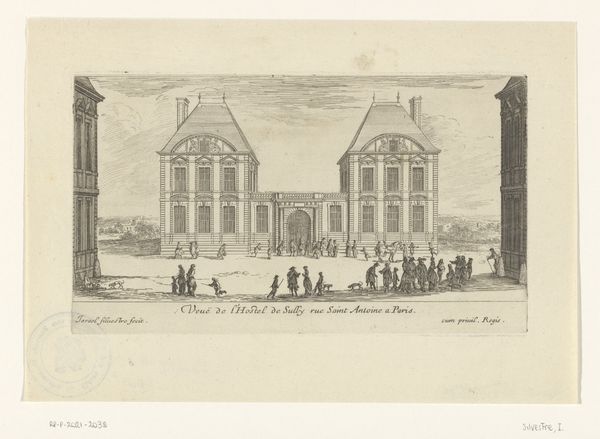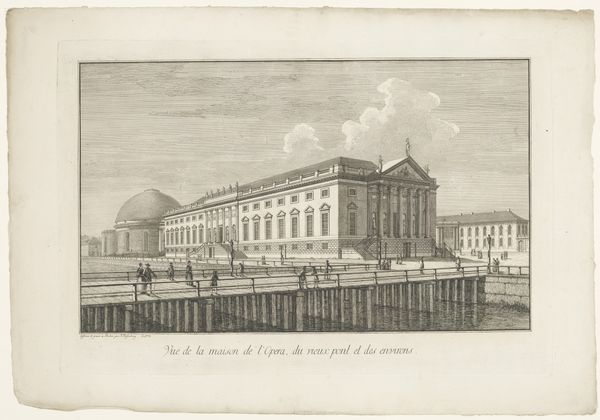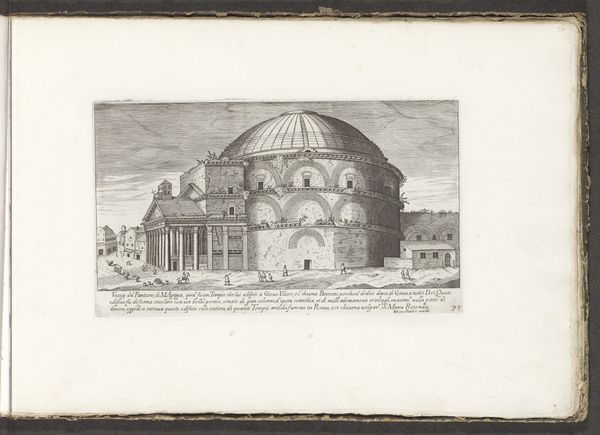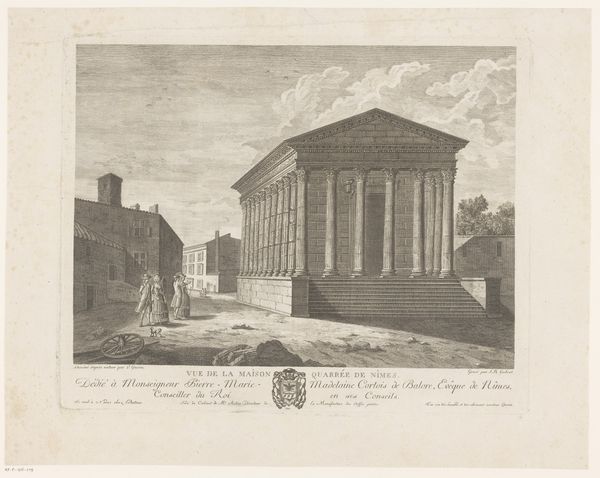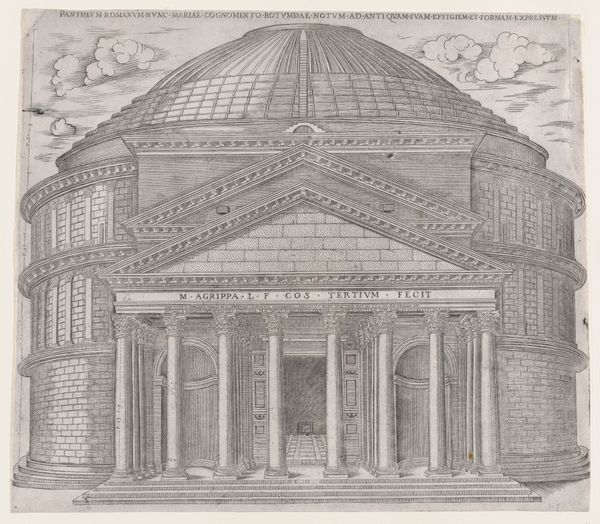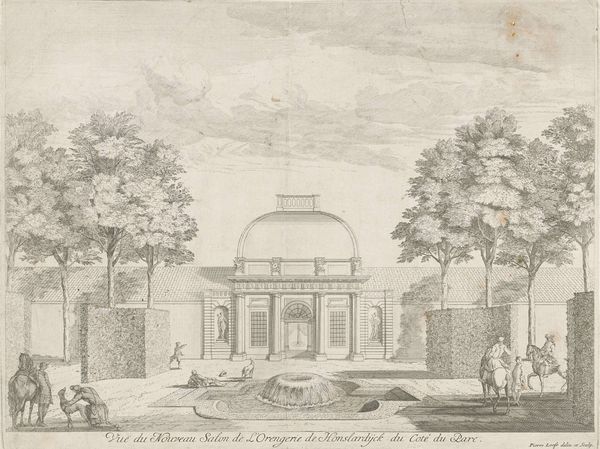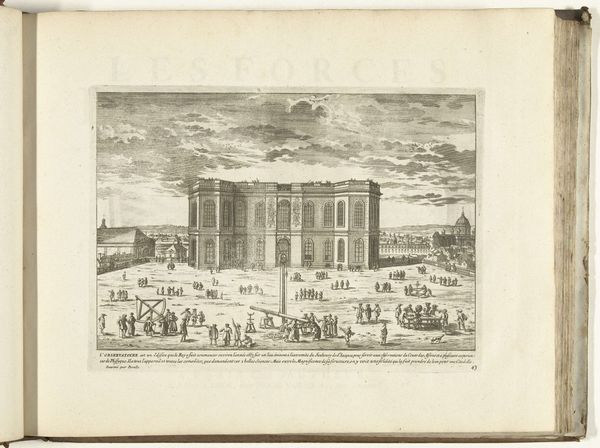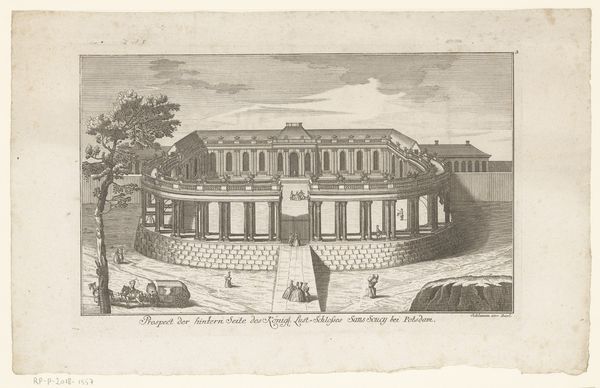
print, engraving, architecture
#
neoclacissism
#
aged paper
#
toned paper
#
light pencil work
# print
#
pencil sketch
#
old engraving style
#
19th century
#
cityscape
#
engraving
#
architecture
Dimensions: height 490 mm, width 744 mm
Copyright: Rijks Museum: Open Domain
Curator: It feels very neoclassical, doesn't it? Precise lines, a sense of order... but also somewhat stark. Editor: Indeed. We're looking at an engraving by Johann Georg Rosenberg from 1777, titled "Gezicht op de Sint-Hedwigskathedraal in Berlijn," or "View of St. Hedwig's Cathedral in Berlin." Curator: An engraving... You can really see the hand of the artist, the deliberate tooling that went into each line to delineate the architecture. The labor-intensive nature of the printmaking really comes across, setting it apart from, say, a photograph of the same subject. Editor: The cool tonality certainly establishes a sense of restraint, highlighting the Cathedral's imposing dome. Note how the light subtly catches the brickwork, revealing texture and form in an even, almost mathematical way. Rosenberg very consciously utilizes hatching and cross-hatching to sculpt form. Curator: Considering it's a depiction of a Catholic cathedral in a Protestant city, one wonders about the intended audience and its function as a tool of power and identity. The cityscape itself communicates Berlin’s ambitions to become a global power, echoing European capitals in the 18th century, maybe hinting about royal patronage involved in this kind of artwork production... Editor: But let’s also consider the aesthetic impact. The artist places us in a specific viewing point. We get the elegant dome contrasting to the straight-lined surroundings, thus using geometrical forms to convey a serene grandiosity of form and a quiet yet assured declaration of space, all through composition. Curator: It’s interesting how a "simple" engraving can unpack layers of socio-political context simply through the choices of material, subject matter, and dissemination techniques. Editor: It's true. We see here a work both formally engaging and rich in historical context; where the close observation of visual form blends perfectly with socio-historic reflections.
Comments
No comments
Be the first to comment and join the conversation on the ultimate creative platform.
